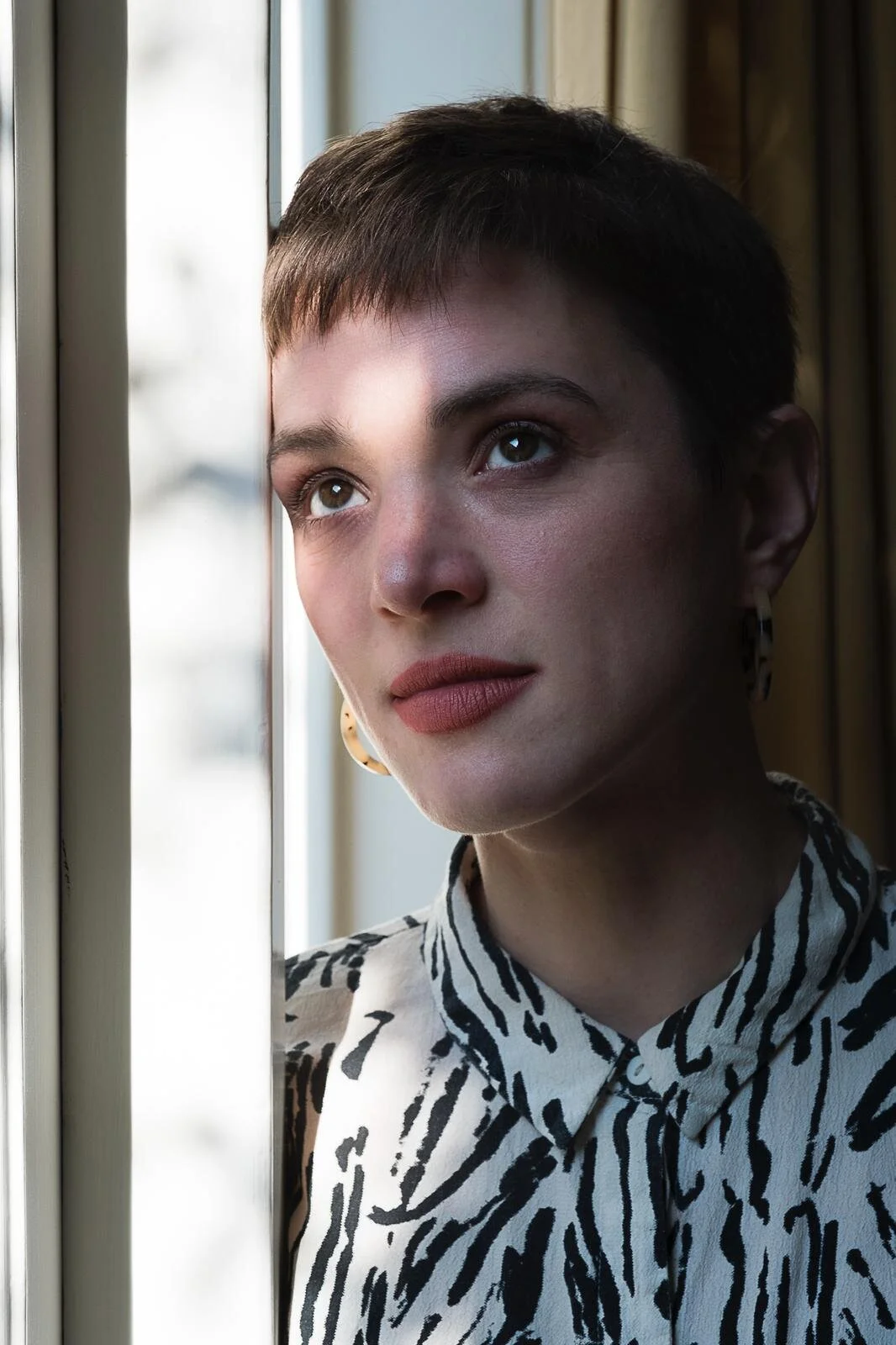ABOUT US
Octavie Dostaler-Lalonde, cello
Photo by Noelia Nicolas
Like many others, I had my first early recording epiphany with Adelina Patti’s 1905 recording of Voi Che Sapete by Mozart. A teacher at the University of Montreal played it for our class, causing many of us to laugh, unsurprisingly, bewildered by her prominent portamenti and conspicuous rubato. My own reaction was a mixture of surprise and awe. At the time, I had already heard some other historical recordings, including the playing of Jacques Thibaud, Sergei Rachmaninov, Pablo Casals, Gregor Piatigorsky and the Capet Quartet, none of which was as strikingly alien to my own musical surroundings as Patti’s. I was also in the middle of reading “The End of Early Music”, which refers to many recordings from the beginning of the century. To add to this favorable context, this particular class was during the first few months of my studies in baroque cello, and I was in the process of applying with excitement and interest a wide range of new expressive possibilities to my own playing. My mind was therefore open to learning about different approaches, and I could receive Patti’s idiosyncratic performance with curiosity rather than defiance or mockery.
The next significant steps that lead to the Romantic Lab were taken in Amsterdam over the following two years. During the first year I befriended Artem whose interest in the early recordings of pianists peaked my curiosity, and during the second I shifted my focus from Baroque music to Beethoven’s time, thus entering the wondrous world of Romantic performance practice as our duo expanded its repertoire towards the later years of the century. We were performing together regularly, and in our free time would routinely listen to historical recordings. It wasn’t long before we thought that the two experiences should coincide. We started imitating recordings to inform our live performances, and eventually decided to turn this into a research-blog: a substantial grant from the Canada Arts Council came at the right moment to help us pursue this goal. We want to continue updating this website with new content and videos in the next years, and perhaps even include other instruments and collaborations down the line…
— ODL
I was trained both as a modern pianist and a historical keyboard player in the HIP tradition. My early training (which also included composition and flute) took place in Odessa, Ukraine, where I grew up. It was there that during my teens I first encountered historical recordings of pianists, and, a little bit later, of violinists. The first ones I heard were by Sergei Rachmaninov. They were shown to me by a friend who waxed lyrical about the poetry and spirit of Rachmaninov's playing. I was equally infatuated by them. And while it was immediately obvious how different his playing was from what I heard on modern recordings and around me, it didn't create the slightest conflict of taste or preferences. I simply added Rachmaninov to the pantheon of what were then my pianistic gods -Sviatoslav Richter being one of the most prominent ones - a contrast in style to Rachmaninov, very much indeed!
Artem Belogurov, piano
Photo by Vincenzo Vitale
Later, I remember actively listening to Kreisler's and Rachmaninov's recording of Beethoven's Op. 30, No. 3 when I was preparing for a recital with a very talented violinist. Again, even though we both enjoyed listening to the record, it didn't have any direct conscious effect on our playing. From what I remember, our and our teacher's main concern was not to lose the tempo - and, judging from a recording of our recital I saw years later, not a second was lost to expressive liberties!
Fast forward to conservatory years in Boston. By then, knowing more early recording artists and their work, it was becoming increasingly clear to me that there was much to be learned from them. What I liked about them was both how individual every artist’s approach was, and how at the same time there were many common stylistic features between them. I started experimenting with incorporating some of these elements into my own playing (occasionally to the annoyance of my teachers, although I tried to avoid doing it in lessons). A friend of mine, another pianist, after hearing me play in a chamber music lesson commented - you never play any chords together! Since it was not my intention, I was both embarrassed and struck that this would happen without my noticing it.
A few years later, during my clavichord and fortepiano studies in Amsterdam, even though I was mainly playing 18th-century repertoire, I kept toying with the idea of imitating historical recordings in a more structured way. There I met my partner in crime Octavie, with whom these experiments gradually became more systematic. Octavie and I shared the idea, famously put forward by Taruskin, that a good starting point for HIP is to imitate Romantic recordings. With the help of the Canada Council for the Arts, it became possible to present our work on this website.


